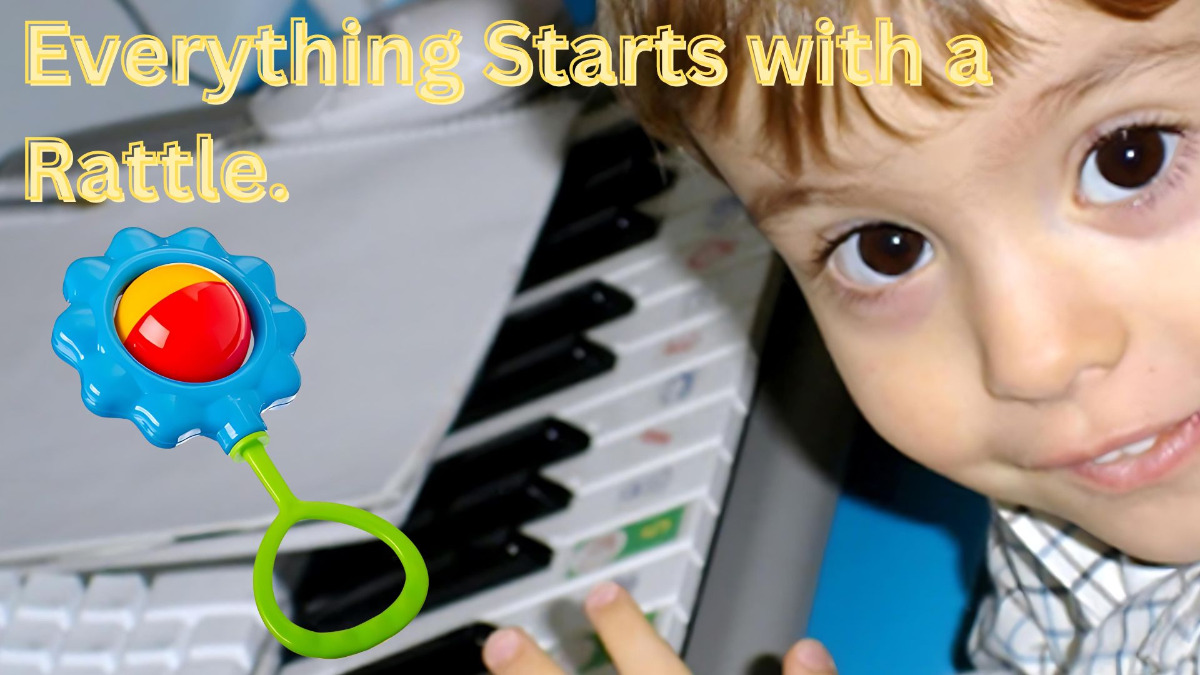Did you know that learning literacy, whether language or musical, doesn't start with a book or an instrument, but with simple sensory stimuli like a rattle? Perceiving the world through our senses is the first step on the path to mastering complex cognitive skills such as reading, writing, or playing a musical instrument. Let's explore how this process works and why the concept of a "rattle" is so important for developing literacy.
The Rattle as the First Sensory Point
A rattle is not just a toy; it's one of the first educational tools in a child's life. It's bright, noisy, and easy for small hands to grasp. But what makes it especially important? It’s all about the vibrations that occur when playing with the rattle. Vibrations are one of the first sensory channels that a child develops while still in the womb. When a baby plays with a rattle, it's the sound vibrations that catch their attention and trigger their visual focus.
These early sensory points help children develop basic cognitive skills: visual and auditory perception, coordination of movements, and cause-and-effect relationships. Each time a child shakes the rattle and hears its sound, they learn that their actions can produce specific outcomes. This experience lays the foundation for more complex forms of learning, such as language and musical literacy.
Informational Picture as a Continuation of the Sensory Experience
As a child grows, their learning becomes more structured, but the foundation remains the same — sensory perception. Here, the concept of an informational picture comes into play — a visual tool that helps connect abstract symbols, such as letters or notes, with concrete images and sounds.
Informational pictures are not just images. They perform the same function as the rattle: they connect visual, auditory, and tactile sensations, creating a holistic perception of information. For example, when learning language, the letter "A" might be depicted alongside an apple, helping the child link the letter's sound with the image of the object. In music, a similar principle can be used to memorize notes and their placement on the staff.
Sensory Points in Learning Language Literacy
Language literacy begins with a child learning to perceive and recognize symbols and sounds. Here, sensory points play a crucial role. A simple example is phonics-based reading methods, where the sounds of letters are linked to specific images or actions. This connection strengthens the child's understanding of the sound structure of language, making it easier for them to learn to read and write.
Just as with the rattle, information is transmitted through multiple sensory channels: sight (letter), hearing (sound), and tactile sensations (writing process). This provides a deeper perception of information and helps it be more effectively absorbed.
Sensory Points in Learning Musical Literacy
Musical literacy, like language literacy, requires the development of sensory skills, but in an even more complex form. Musical notes, rhythms, and melodies require the integration of visual, auditory, and motor perception. Here, the concept of a "sensory point" in music comes into play, much like the rattle.
In the Soft Mozart system developed by Hellene Hiner, each note becomes such a "sensory point," combining the visual representation of the note, its sound, and its timing. This system allows students to easily and naturally perceive complex musical elements, developing their coordination, musical ear, and memory. Just as the rattle teaches a child to interact with the world, the Soft Mozart system teaches them to interact with music, making it accessible and engaging.
The Rattle as a Metaphor for Successful Learning
Thus, the "rattle" or sensory point approach is the key to successful literacy education. Whether a child is learning letters or notes, sensory points help them connect abstract symbols with concrete sensations, creating strong associations in their minds. These early experiences lay the groundwork for more complex skills like reading, writing, and playing a musical instrument.
Relying on established sensory channels — sight, hearing, touch, and of course, the perception of vibrations — plays a critical role in scientific pedagogy. After all, each of us started with something simple, yet so essential, like a rattle.

